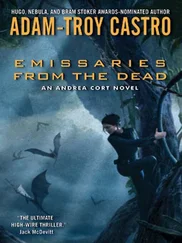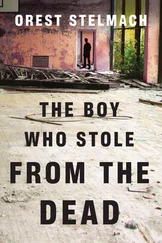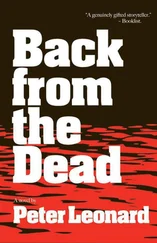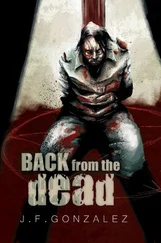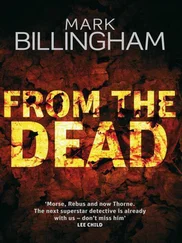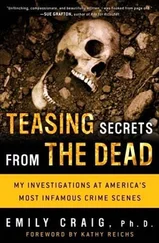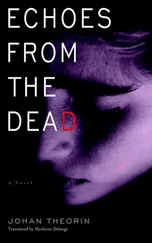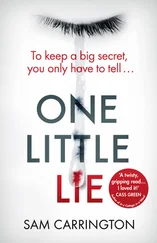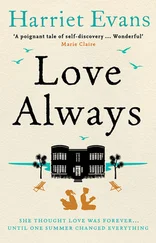The investigation had gone on for months, and Marvin had even called in the FBI. The Bureau had managed to determine that the white cloth was probably a diaper, but found very little else that could be used to identify her. When the local newspaper ran a story on the victim, they called her Tent Girl, because of the canvas tarp. The paper had asked Covington police officer Harold Musser for sketches based on the autopsy photos, and something about the wistful young woman with her waifishly short hair caught the public's imagination. When Tent Girl was finally laid to rest in the Georgetown Cemetery-only a few miles from where I now live-the marker on her grave read simply “#90”-the number of her anonymous plot.
Three years later, two men who owned a local monument company built her a special headstone-red, to match her hair-with a version of the sketch etched into the granite. The Tent Girl became a local legend, drawing visitors from all over Kentucky and Ohio, especially young women, who seemed to feel a special kinship with her.
Marvin felt something for her, too, and when I took the job in Kentucky he thought he saw a fresh chance of solving a case that had bothered him for years. He brought me the autopsy photos and Musser's sketches, and asked if I could maybe do a better sketch. However, to my artist's and anthropologist's eye, the sketch artist had done an excellent job. He'd been true to all the scientific detail available in the photo-and, somehow, he'd made the young woman's face come alive.
“I honestly don't think I could improve on these,” I told Marvin. “The problem isn't with the sketches. The problem is that the right person hasn't seen them yet.”
Marvin was reluctant to accept this, but I'd seen it already in my short career and I'd have cause to see it again throughout the years. Facial reconstructions are basically a shot in the dark. If you're lucky enough to get the right person to see them, they work. If you're not, they don't. The quality of the facial reconstruction is important, sure, but that alone won't bring you success. Luck has a lot more to do with it.
And, indeed, it was luck that had brought me here today. Some thirty years after Tent Girl had been laid to rest, I was standing in her grave-because someone finally thought he knew who she was.
“Do you have enough room over there, Doc?” My grave-digging companion, a local deputy, was standing right beside me, trying not to step on any of the bones. We'd excavated the grave with a backhoe, but the young woman had been buried without a coffin, so as soon as we caught sight of the first bone, I'd climbed down into the hole. Now I was on my knees with a hand trowel, recovering those few bones that hadn't long ago crumbled into earth. Later that week, we would try to match their mitochondrial DNA with the blood of someone who thought that Tent Girl might be her long-lost sister.
The deputy was standing ready with a shovel, prepared to toss out the dirt that I dug up. “Seems to me like you've got all the hard work,” I told him, scraping a little more soil away from the half-buried fibula. “This looks like the easy part to me.”
He shook his head. “I'm just as happy not to have to dig up a dead woman's bones,” he said. “I'll leave that little job to you.”

The story of how Tent Girl's identity had finally been discovered was one that would make even the most arrogant investigator bow her head and give thanks for the dedicated efforts of interested civilians. Some twenty years after that well-driller had found the body, he'd moved to Livingston, Tennessee, where his daughter, Lori, started dating a seventeen-year-old boy named Todd Matthews. Todd hadn't even been born when Lori's father found the Tent Girl, but something about the anonymous young woman caught his imagination. Todd went on to marry Lori and his interest in Tent Girl increased, almost to the point of obsession. Eventually, he made it his life's work to discover Tent Girl's identity.
Todd's all-consuming interest in the case began to threaten his marriage and drastically cut into the time he spent with his own young son. When he realized that the Internet could significantly expand his ability to search for clues, he started spending hour after hour at his computer. Late one night in January 1998, after his wife and child had gone to bed, Todd clicked on to a missing persons website-and struck pay dirt. There was a description of a young woman who had gone missing from Lexington, Kentucky. Somehow, intuitively, Todd knew that this was the woman he sought.
The description had been posted by Rosemary Westbrook, a forty-year-old woman then living in Arkansas. Rosemary's father and brother had been killed by floods in Illinois two weeks before she was born, and her mother's hands were full caring for the other six children. Baby Rosemary was sent to live with relatives who made sure she kept in close touch with her mother, brothers, and sisters.
When she was ten, Rosemary learned that her older sister Barbara Ann Hackmann Taylor, then twenty-four, had mysteriously disappeared. As an adult, Rosemary decided that she wanted to find her missing sister. The previous August, she had posted a description of Barbara-the very posting Todd Matthews found that January night:
NAME: BARBARA ANN (HACKMANN) TAYLOR
RELATIONSHIP: SISTER
DATE OF BIRTH: 9-12-1943
FEMALE
Remarks: My sister Barbara has been missing from our family since the latter part of the year 1967. She has brown hair, brown eyes, around 5 feet, 2 inches tall, last seen in the Lexington, Kentucky, area. If you have any information on my sister, please contact me at the address posted.
When Todd called Rosemary and gave her the details about the Tent Girl, she, too, became convinced that this was her missing sister, known to family and friends as Bobbie. Apparently Bobbie had married a man named George Earl Taylor, with whom she'd traveled the carnival circuit in the mid-1960s. When Bobbie disappeared, George took their baby son and daughter to live with his parents, telling them that Bobbie had run off with a trucker. The son had died as a young adult, but the surviving daughter was still haunted by the knowledge that her mother had never come back to get her, had never sent so much as a postcard to say she remembered her child.
Bobbie had also helped raise George's daughter from a previous marriage. That daughter later told Rosemary that she'd last seen Bobbie in Lexington, Kentucky -a detail that made Todd more certain than ever that Tent Girl was Barbara Ann Hackmann Taylor. He contacted Marvin Yokum, who after all these years was still Scott County coroner.
Once again, Marvin and I met in my office, along with Scott County Detective John Ferris. This time, besides Tent Girl's autopsy photos, Marvin was able to show me photos of Barbara Ann.
In the first one, she looked somber, her mouth closed, her eyes serious as she stared into the camera. I looked slowly back and forth between that forty-year-old photograph and the old sketch of Tent Girl. Yes, I thought. Everything looked right-the proportions of the features, the shape of the face. This could be a match.
“Do you have any other pictures?” I asked.
Marvin slid another photograph across my desk, a three-quarter view in which Bobbie's mouth was open just a little, exposing a couple of teeth. I looked closely at the autopsy photo that had been taken of the decomposed head and face and noticed several similarities. I couldn't see enough teeth in Bobbie's picture to be absolutely certain, but maybe-just maybe-it was a match.
“It's not enough for a positive ID, though,” I added quickly, and saw Marvin's look of disappointment. “First of all, the photograph's too fuzzy. And secondly, the teeth just aren't that unusual. I mean, if you get a real clear picture with someone's mouth open real wide, and maybe the person has a gold front tooth with a heart carved in it, or if a tooth is totally rotated and then the one next to that is missing-then, yes, a forensic odontologist can make a positive ID from that.” I gestured toward the snapshot lying on my desk, one of those Kodak specials from forty years ago, with the white border and the little date stamped on it. “This is so close, though, I think we can justify looking at DNA.”
Читать дальше


